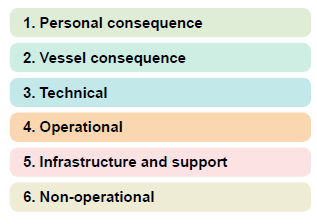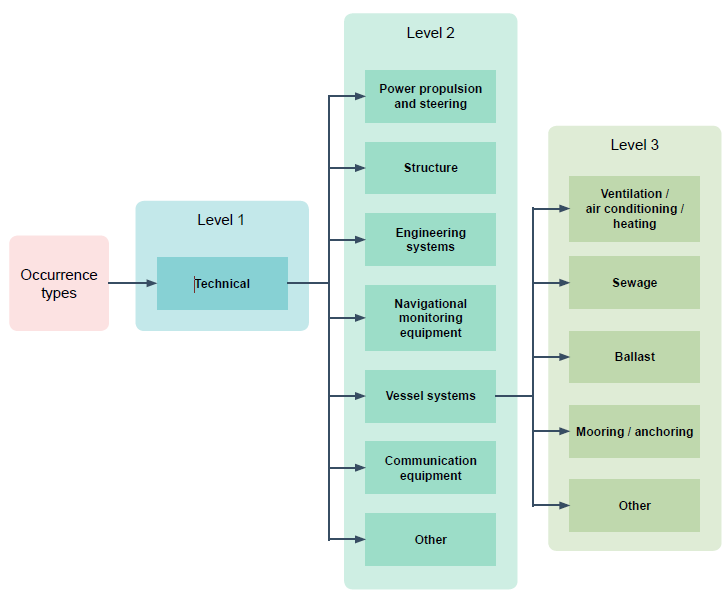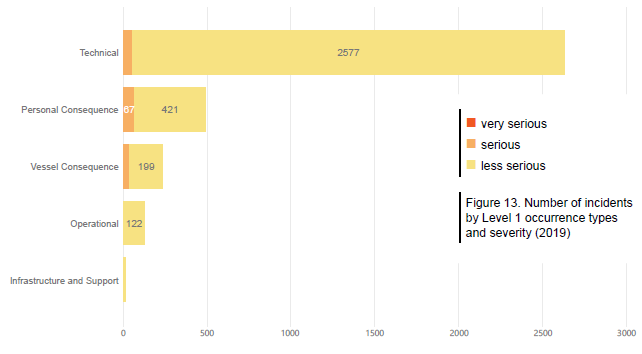Incidents are usually the result of a complex set of circumstances, often involving a chain of events. To gain a better understanding of what incident reports are telling us, AMSA categorises all incident reports into one or more ‘occurrence types’, to consistently describe what happened in each incident. Classifying incidents in this way helps to understand patterns of what has taken place and identify potential areas for safety improvement.
The categorisation of incidents does not explain why a marine incident happened—it describes what occurred.
Incident categories
The coding of all incident reports into occurrence types consists of a three-level hierarchy. The first level of the hierarchy is categorised into the following occurrence type groupings:

The table below provides a descriptor of each of the level 1 occurrence types.
| Level 1 occurence type groupings | Marine incidents relared to: |
|---|---|
| Personal consequence | The impact / outcome of one of the other Level 1 groupings on persons on the vessel. |
| Vessel consequence | The impact / outcome of one of the other Level 1 groupings on the vessel. |
| Technical | A technical failure / missing / defective vessel structure, equipment or system. |
| Operational | An operational shortfall. This is usually associated with an action someone did or did not do that impacted on the safe operation of the people and/or vessel. |
| Infrastructure and support | A failure or issue with port, VTS, navigational aids and other infrastructure support facilities that directly affect vessel operations. |
| Non-operational | Other causes that are not directly related to the operations of the vessel (potentially piracy, acts of war) that impact the safe operation of a vessel. |
Each of the level 1 occurrence types are sub-divided into a number of related level 2 occurrence types. In turn, level 2 occurrence types are further sub-divided into level 3 occurrence types. The hierarchical nature of the occurrence types is of fundamental importance, as it helps in the identification of trends. For example, a series of incidents may be seen to be unrelated as they reflect collisions with other vessels, collisions with wharves, and grounding. However, the underlying issue in all these incidents may be engine failure.
Figure 12 provides a visual representation of part of this framework with the level 1 occurrence type ‘Technical’, expanded into its level 2 and level 3 occurrence types.

Figure 12. An example of the level 1 ‘Technical’ occurrence type expanded into its level 2 and level 3 occurrence types.
Figure 13 shows a breakdown of the 3371 marine incidents reported in 2019 into their level 1 occurrence types by severity 4. Overall, the most common level 1 occurrence type associated with reported incidents is Technical (78.4% of incidents) followed by Personal Consequence (14.7% of incidents).
Occurrence types – Level 1

Technical occurrences are the most common level 1 occurrence type with the data showing an increasing trend in technical related incident reports between 2016 and 2019. The relative distribution of the other occurrence types has been consistent across the years from 2016 to 2019.

Footnote 4: Note that one incident may be coded into multiple categories.